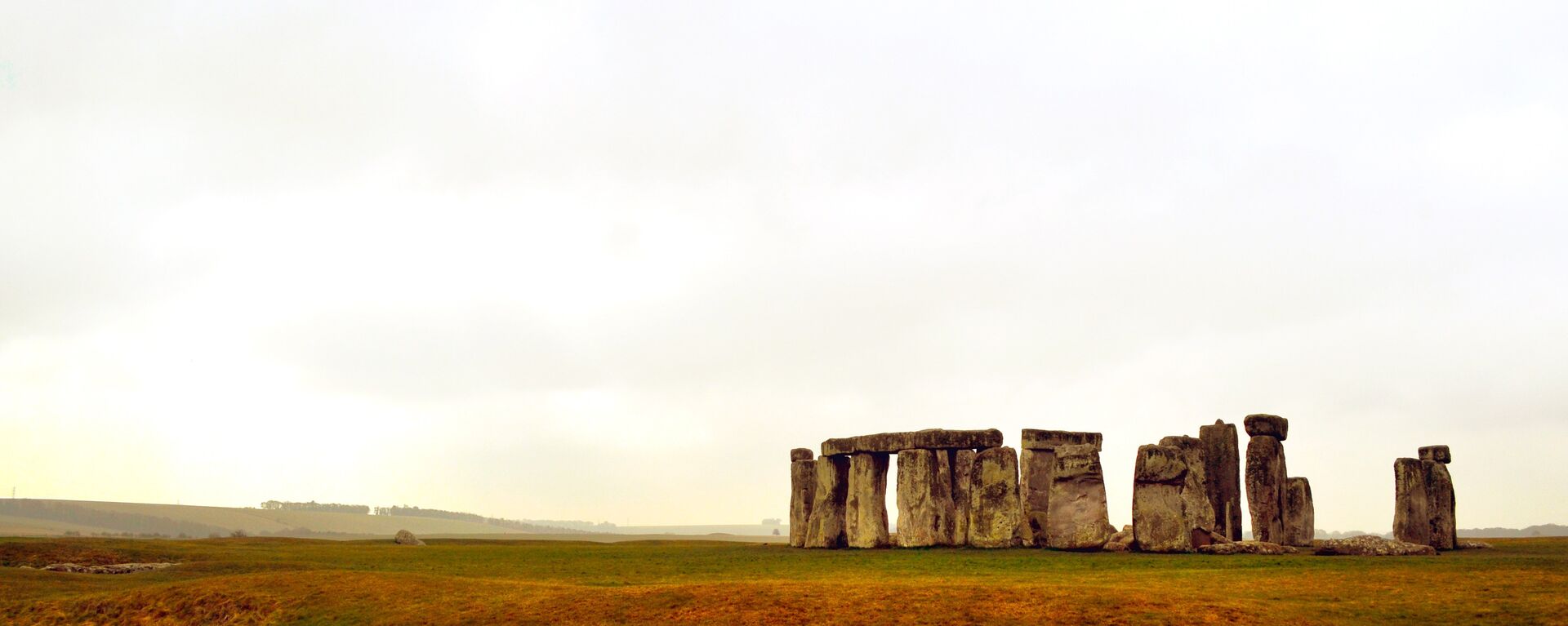https://sputnikglobe.com/20220819/spanish-stonehenge-reemerges-from-water-amid-scorching-heat-1099756190.html
‘Spanish Stonehenge’ Reemerges From Water Amid Scorching Heat
‘Spanish Stonehenge’ Reemerges From Water Amid Scorching Heat
Sputnik International
First discovered in 1925 by German priest and archaeologist Hugo Obermaier, the prehistoric monument was submerged in 1963, when former Spanish leader General... 19.08.2022, Sputnik International
2022-08-19T09:03+0000
2022-08-19T09:03+0000
2022-10-19T20:18+0000
science & tech
spain
monument
stonehenge
program
archaeology
https://cdn1.img.sputnikglobe.com/img/07e6/08/13/1099755772_0:1:929:524_1920x0_80_0_0_1d995854e177b236ee1a4f909a24b030.png
The ancient Dolmen of Guadalperal, also known as “the Spanish Stonehenge”, has emerged from a reservoir near the capital Madrid as Spain faces its worst drought in 60 years.The monument, which is believed to date back to at least 5,000 B.C., is currently seen being fully exposed in one corner of the Valdecanas Reservoir, where the water level decreased to about 28% of capacity due to scorching heat.The monument features a massive circle of about 150 standing stones, with some being more than 1.8 meters tall, taking the form of an open oval.The structure was discovered in 1925 by German priest and archaeologist Hugo Obermaier, but no research about the site was published at that time and its discovery remained unknown.In the early 1960s, former Spanish ruler Francisco Franco launched a civil engineering program to bring fresh water and hydroelectricity to the surrounding regions, which led to the creation of a manmade lake and the flooding of the site, submerging the monument in water for the next 50 years. Since 1963, the Dolmen of Guadalperal has been fully visible just four times.Some local historical groups have repeatedly petitioned to relocate the entire site to the open air, but archeologists fear that such a move would only accelerate the monument’s decay. Dolmens are stones arranged vertically to support a flat top, which scientists suggest could have initially been built for ritualistic purposes.
https://sputnikglobe.com/20190823/severe-drought-in-spain-reveals-5000-year-old-stonehenge-1076619053.html
spain
Sputnik International
feedback@sputniknews.com
+74956456601
MIA „Rossiya Segodnya“
2022
Oleg Burunov
https://cdn1.img.sputnikglobe.com/img/07e4/09/0b/1080424846_0:0:2048:2048_100x100_80_0_0_3d7b461f8a98586fa3fe739930816aea.jpg
Oleg Burunov
https://cdn1.img.sputnikglobe.com/img/07e4/09/0b/1080424846_0:0:2048:2048_100x100_80_0_0_3d7b461f8a98586fa3fe739930816aea.jpg
News
en_EN
Sputnik International
feedback@sputniknews.com
+74956456601
MIA „Rossiya Segodnya“
Sputnik International
feedback@sputniknews.com
+74956456601
MIA „Rossiya Segodnya“
Oleg Burunov
https://cdn1.img.sputnikglobe.com/img/07e4/09/0b/1080424846_0:0:2048:2048_100x100_80_0_0_3d7b461f8a98586fa3fe739930816aea.jpg
science & tech, spain, monument, stonehenge, program, archaeology
science & tech, spain, monument, stonehenge, program, archaeology
‘Spanish Stonehenge’ Reemerges From Water Amid Scorching Heat
09:03 GMT 19.08.2022 (Updated: 20:18 GMT 19.10.2022) First discovered in 1925 by German priest and archaeologist Hugo Obermaier, the prehistoric monument was submerged in 1963, when former Spanish leader General Francisco Franco ordered a valley bordering the Tagus River in the Iberian Peninsula to be flooded.
The ancient Dolmen of Guadalperal, also known as
“the Spanish Stonehenge”, has emerged from a reservoir near the capital Madrid as Spain faces its worst drought in 60 years.
The monument, which is believed to date back to at least 5,000 B.C., is currently seen being fully exposed in one corner of the Valdecanas Reservoir, where the water level decreased to about 28% of capacity due to scorching heat.
Reuters quoted archaeologist Enrique Cedillo from Madrid's Complutense University as saying that seeing “the Spanish Stonehenge” is “a surprise” and “a rare opportunity to be able to access it”.
The monument features a massive circle of about 150 standing stones, with some being more than 1.8 meters tall, taking the form of an open oval.

23 August 2019, 12:37 GMT
The structure was discovered in 1925 by German priest and archaeologist Hugo Obermaier, but no research about the site was published at that time and its discovery remained unknown.
In the early 1960s, former Spanish ruler Francisco Franco launched a civil engineering program to bring fresh water and hydroelectricity to the surrounding regions, which led to the creation of a manmade lake and the flooding of the site, submerging the monument in water for the next 50 years. Since 1963, the Dolmen of Guadalperal has been fully visible just four times.
Some local historical groups have repeatedly petitioned to relocate the entire site to the open air, but archeologists fear that such a move would only accelerate the monument’s decay. Dolmens are stones arranged vertically to support a flat top, which scientists suggest could have initially been built for ritualistic purposes.



